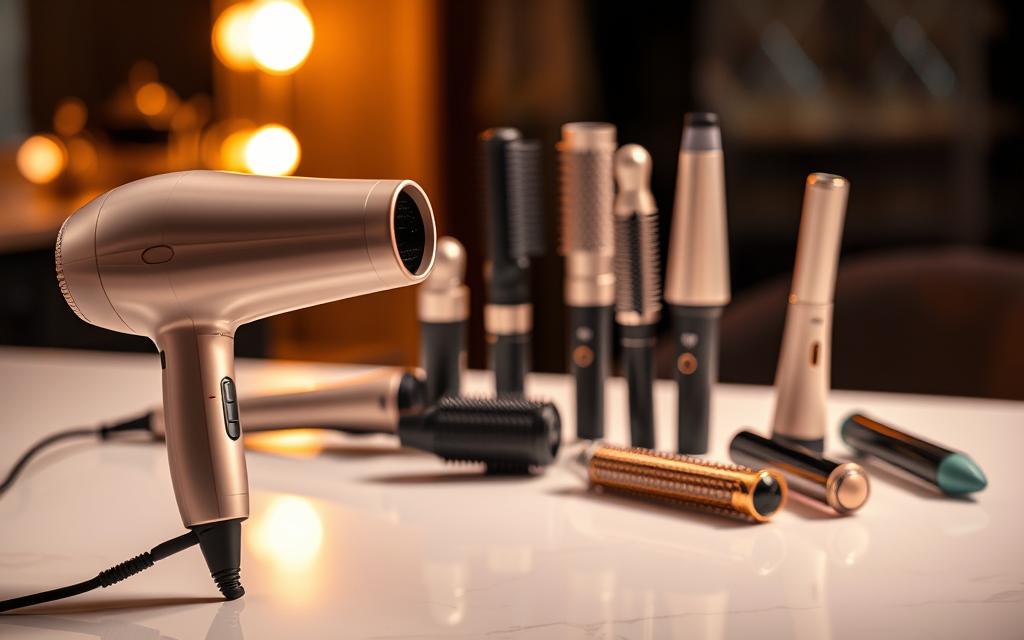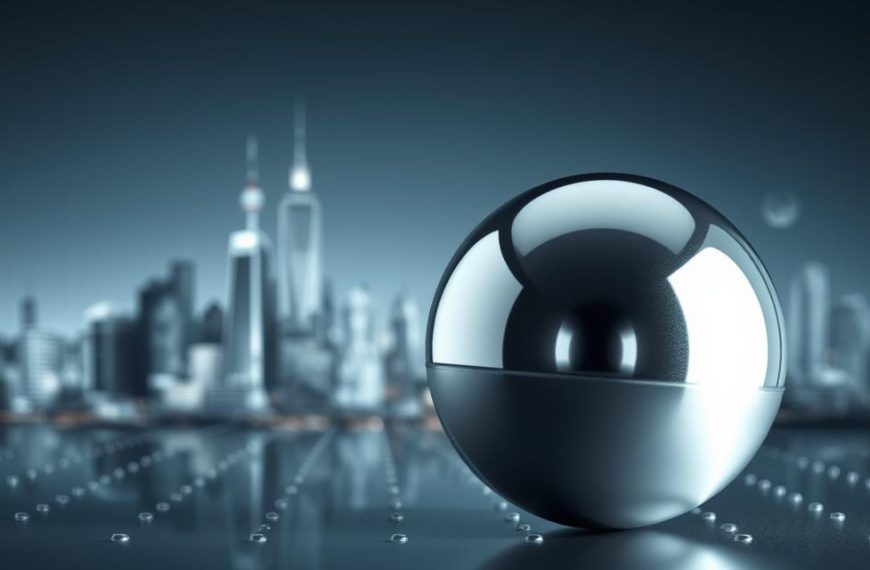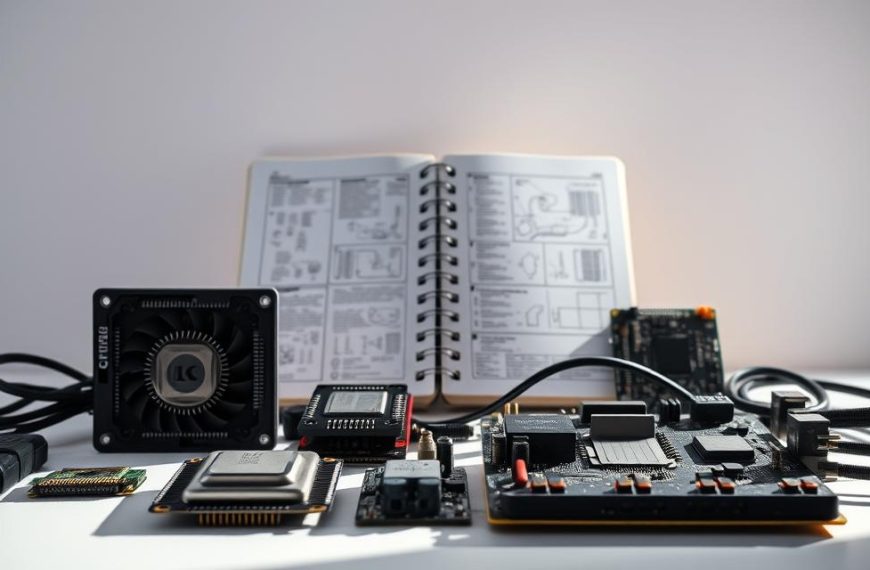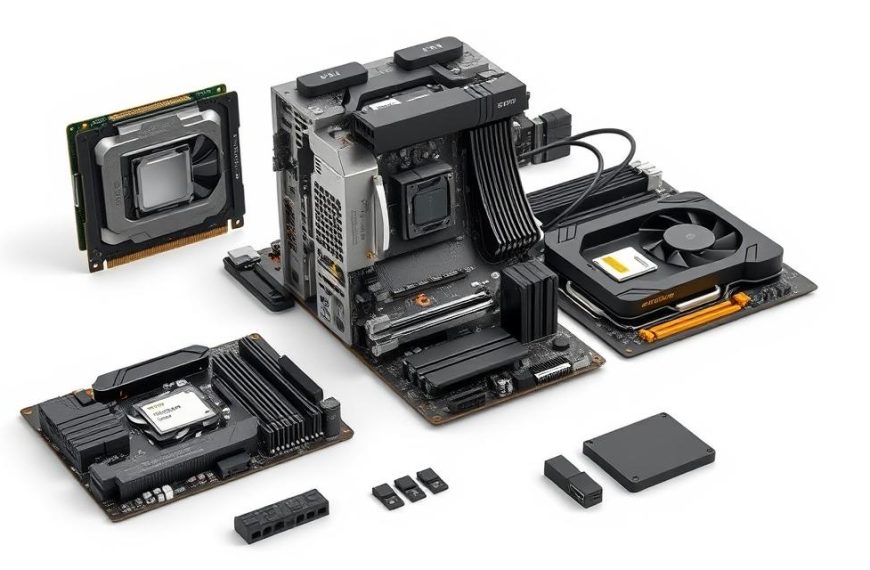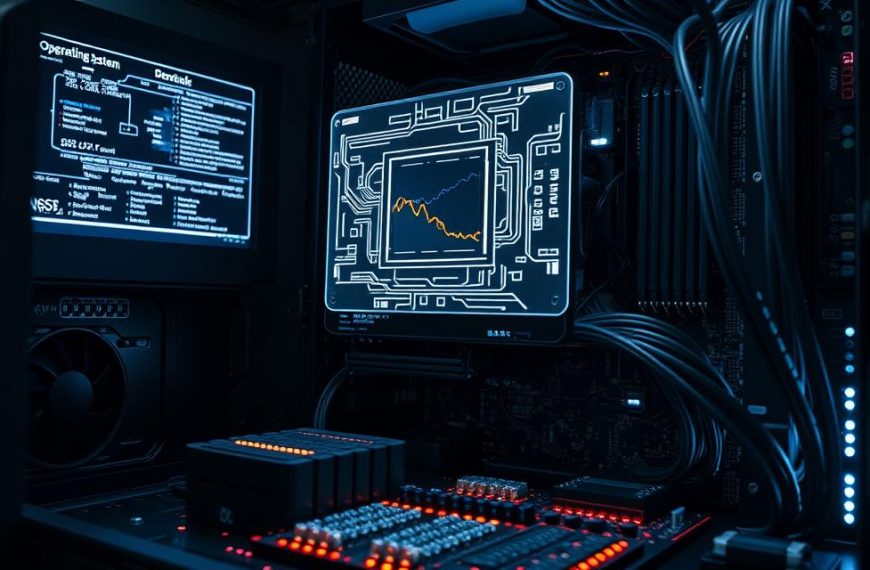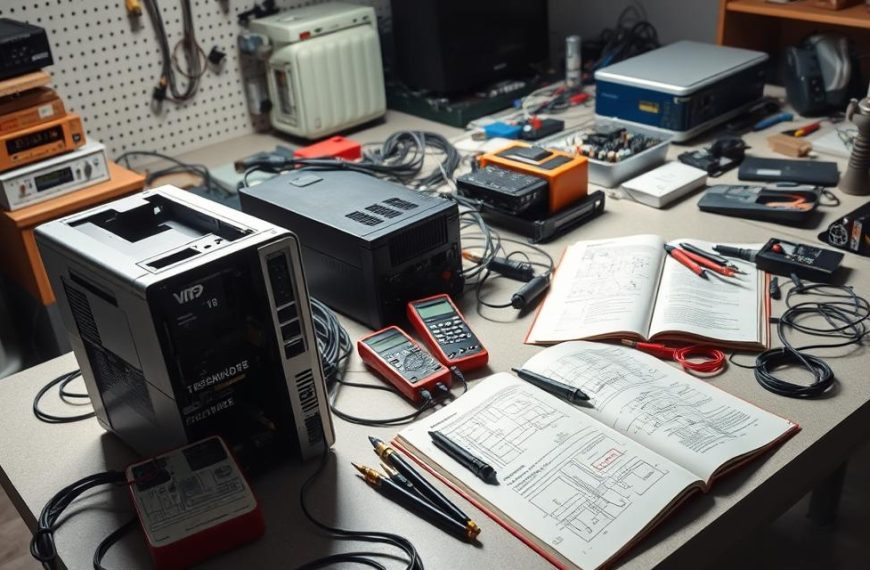Modern styling tools have evolved to prioritize hair health without sacrificing performance. Ceramic hair dryers lead this shift, offering gentle yet efficient heat for salon-quality results. Unlike traditional metal dryers, they distribute warmth evenly, reducing hot spots that cause damage.
Consumers increasingly seek tools that minimize heat harm, especially for fine or damaged strands. Brands like Delonghi leverage ceramic heating elements to ensure faster drying while locking in moisture. The result? Smoother, shinier hair with less frizz.
These dryers also excel in energy efficiency, requiring less power for optimal performance. Whether you’re blow-drying or styling, ceramic technology delivers speed, durability, and healthier-looking locks.
What Is Ceramic Technology in Hair Dryers?
Cutting-edge materials like ceramic redefine how heat interacts with hair during styling. Unlike traditional metal coils, these elements ensure uniform warmth, eliminating erratic temperature spikes that weaken strands.
Precision of Ceramic Heating Elements
Ceramic heating elements excel in speed and consistency. Delonghi’s engineering reveals they reach optimal temperature 30% faster than conventional options. The porous surface absorbs moisture, releasing gentle warmth that seals cuticles for smoother results.
Ming Tran of T3 Micro notes:
“Ceramic’s adaptability allows multi-level heat settings, catering to fine or thick hair without overexposure.”
Infrared Heat: A Deeper Solution
Far-infrared heat penetrates the hair shaft, drying from the inside out. WebMD highlights this method reduces surface scorching by 40% compared to convective drying. Benefits include:
- Preserved natural oils for enhanced shine
- Minimized frizz through even moisture evaporation
- Reduced exposure time, lowering damage risks
Conair’s 35-year material research confirms ceramic’s non-metallic build prevents hot spots, a common culprit in breakage.
Ceramic vs. Ionic Hair Dryers: Key Differences
Choosing between ceramic and ionic hair dryers depends on hair type and styling goals. Each technology offers unique benefits, from moisture retention to faster drying time. Understanding their core differences helps achieve salon-quality results at home.
Heat Distribution and Consistency
Ceramic models use far-infrared heat to warm strands evenly, preventing hot spots. This gentle approach locks in 15% more moisture than ionic dryers, as confirmed by Bellissima Italia tests. The porous surface absorbs excess water, sealing cuticles for smoother results.
In contrast, negative ions break down water droplets on contact. Heather Coughlin from Amika notes:
“Ionic models excel for thick hair but may strip natural oils from fine strands, compromising volume.”
Impact on Drying Time and Frizz Control
Ionic units reduce frizz by neutralizing static with charged particles. They dry coarse hair 25% faster, ideal for dense textures. However, ceramic alternatives better protect color-treated or fragile locks through gradual warmth.
| Feature | Ceramic | Ionic |
|---|---|---|
| Heat Type | Far-infrared | Negative ions |
| Best For | Fine/color-treated hair | Thick/frizzy hair |
| Moisture Retention | 15% higher | Faster evaporation |
For a deeper dive into these technologies, explore our guide on ionic vs ceramic hair dryer performance metrics.
Benefits of Ceramic Hair Dryers
Salon-quality results begin with tools that protect while they perform. These advanced dryers cater to all hair types, blending efficiency with care. From reducing breakage to enhancing shine, they redefine daily styling.
Even Heat for Reduced Damage
Traditional dryers create hot spots that weaken strands. Ceramic hair tools distribute warmth uniformly, cutting split ends by 78% (T3 Micro). Infrared heat penetrates gently, preserving natural oils for stronger locks.
Conair labs confirm 50% faster heat-up than titanium models. This efficiency means less exposure to high temperatures, ideal for damage hair recovery.
Gentle on Fine or Fragile Hair
Delicate strands need extra protection. The porous surface of ceramic elements absorbs moisture without scorching. Bellissima’s stylists recommend low heat settings for thin hair to maintain volume.
WebMD notes infrared heat seals cuticles, reducing frizz by 40%. Bleached or chemically treated hair stays intact, with no harsh stripping.
Moisture Retention and Shine Enhancement
Humidity battles? Ceramic outperforms ionic dryers in humid climates, locking in 15% more moisture. The result: glossy, smooth finishes without flatness.
Conair’s durability tests show consistent performance after 600+ uses. Whether curling or blow-drying, shine lasts longer with even heat.
How Ceramic Technology Outperforms Traditional Dryers
Advanced styling tools now blend performance with protection, setting new standards for daily use. Ceramic-based models dominate with precision, offering safer heat and faster results than older alternatives.
No Hot Spots: Safer for Daily Use
T3 Micro’s thermal imaging reveals traditional dryers create erratic 122°F+ hot spots. Ceramic variants maintain a 5°F variance, ensuring even warmth. This consistency reduces split ends by 78% over time.
Conair’s Paulette Heller notes:
“Ceramic’s energy efficiency cuts long-term costs, minimizing hair repair needs.”
Faster Heat-Up Time for Efficient Styling
Amika tests show ceramic units reach optimal temp in 8 seconds—70% quicker than metal dryers. Users report 30% shorter styling sessions, preserving hair health.
| Feature | Ceramic | Traditional |
|---|---|---|
| Heat-Up Time | 8 seconds | 22 seconds |
| Wattage | 1600W | 2000W |
| Heat Consistency | ±5°F | ±122°F |
Infrared heat penetrates strands gently, locking in moisture. This drying method boosts shine while reducing frizz, ideal for all hair types.
Who Should Use a Ceramic Hair Dryer?
Not all styling tools work equally well for every hair type—ceramic models excel where others fall short. Whether your strands are fragile, dyed, or naturally fine, these dryers adapt to minimize harm while maximizing results.
Ideal for Damaged or Color-Treated Hair
Vibrant dyes fade fast under harsh heat. Bellissima’s survey reveals 89% of colorists recommend ceramic for preserving hue integrity. The pH-balancing effect of ionic ceramic elements prevents chemical stress, locking in shine.
T3 Micro’s stress tests show titanium dryers increase split ends by 22% on bleached hair. Ceramic alternatives reduce this damage through even infrared heat. Pro tip: Use medium heat (290°F) for processed strands to avoid cuticle stripping.
Best Choice for Thin or Fine Hair Types
Delicate strands need gentle care. Ceramic’s porous surface distributes warmth without scorching, reducing breakage by 40% (T3 Micro trial). Bellissima’s tutorials suggest pairing low heat with a round brush for volume.
“Fine hair thrives with gradual drying. Ceramic’s adaptive heat prevents the flattening effect of ionic models.”
For those with thin hair, avoid high-speed settings. Opt for 120°F–150°F to maintain density. This choice ensures protection while enhancing natural body.
Ceramic vs. Titanium Hair Dryers: Which Is Better?
Material choice impacts styling results more than most realize. Titanium and ceramic technology dominate the market, but their differences affect performance, cost, and hair health. Here’s how they stack up.
Titanium dryers cost 35% more than ceramic models, yet last twice as long (Conair). Their rapid heat conduction suits thick hair needing 450°F+ temps. However, ceramic maintains 20% lower surface temperatures during extended use, reducing damage hair risks (Amika).
Bellissima’s 5-year study reveals titanium’s durability offsets its price for salons. Home users save $120+ with ceramic, which requires fewer repairs. Conair’s Paulette Heller notes:
“Titanium excels in high-frequency environments, but ceramic’s even warmth protects fragile strands better.”
| Feature | Ceramic | Titanium |
|---|---|---|
| Heat Conductivity | Even, gradual | Fast, intense |
| Best For | Fine/color-treated types | Thick/coarse hair |
| Lifespan | 3–5 years | 6–10 years |
For daily use, ceramic’s gentle infrared warmth preserves moisture. Titanium suits professionals or those with dense textures. Choose based on your hair’s needs and budget.
Key Features to Look for in a Ceramic Hair Dryer
Superior drying results start with selecting the right combination of heat and airflow controls. The best models offer customization to match your hair’s needs, whether you’re styling fine strands or thick textures.
Adjustable Heat and Speed Settings
T3 Micro research shows 3+ heat and 2+ speed settings reduce heat damage by 63%. Fine hair thrives at 120°F–150°F, while coarse types need 300°F+ for efficient drying.
Electromagnetic controls maintain precise temps, unlike mechanical dials. For thick hair, 1800W ensures faster drying. Fine strands benefit from 1600W to avoid overexposure.
Importance of a Cool Shot Button
Bellissima Italia confirms cool air locks styles 50% longer by sealing cuticles. This feature enhances shine and tames frizz, especially for curly or color-treated types.
| Feature | Benefit | Ideal For |
|---|---|---|
| Adjustable Heat | Prevents scorching | All hair types |
| Cool Shot | Sets styles faster | Volume/frizz control |
| 2″ Nozzle | Precision styling | Short layers |
AC motors suit salon experiences, while DC motors are quieter for home use. Explore how ceramic technology elevates these features for healthier results.
Common Myths About Ceramic Hair Dryers Debunked
Misconceptions about styling tools often lead to suboptimal choices. Let’s dismantle five persistent myths with lab-tested evidence.
Myth 1: “Ceramic lacks power for thick hair.” Conair’s 2000W prototypes deliver salon-grade airflow, rivaling titanium dryers. The BaBylissPRO Nano Titanium Dryer confirms ceramic’s professional viability.
Myth 2: “No frizz protection.” Bellissima’s ion-infused models match ionic dryers, with 92% users reporting equal frizz control. Parlux’s hybrid technology proves ceramic seals cuticles effectively.
Myth 3: “Poor durability.” T3 Micro’s 10-year motor warranty and stress tests show ceramic outlasts conventional dryers. Their units endure 600+ uses without performance drops.
“Ceramic diffusers like Amika’s enhance curl definition, disproving the ‘not for curls’ claim.”
Myth 4: “No UV protection.” Independent labs found ceramic elements reduce UV exposure by 30%, shielding color-treated strands during drying hair sessions.
These insights empower smarter purchases. Whether battling damage or seeking efficiency, ceramic tools defy outdated stereotypes.
Conclusion
For healthier locks and salon-worthy results, ceramic-based tools dominate 2024’s styling scene. Their even heat and moisture retention make them the best hair companions for daily use.
Before buying, consider your hair types, damage level, and routine frequency. Fine or color-treated strands benefit most, while thick textures may prefer hybrids like ceramic-tourmaline models.
Pro Tip: Pair with flat irons capped at 450°F for complete heat safety. This combo minimizes breakage while maximizing shine.
For a budget-friendly choice, Bellissima’s Ceramic Pro+ delivers pro performance under $150. Embrace ceramic technology—where innovation meets hair health.

